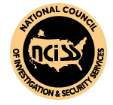According to U.S. law, human trafficking is “the use of force, fraud or coercion to compel a person into commercial sex acts or labor or services against their will.” It can be difficult to understand how human trafficking happens because there is no one form of force, coercion or fraud used by traffickers. Rather, traffickers use a number of different tactics to lure their victims and keep them compliant. Most of these tactics involve some kind of abuse, threats or intimidation and a trafficker might use several different tactics to gain and keep control of their victims. Here are a few of those tactics:
Sexual Abuse – Using sexual assault as a means of control. Forcing the victim to have sex with multiple people, often in one day. Normalizing or rationalizing the selling of sex.
Emotional Abuse – Using emotional manipulation and humiliation as a means of control. Calling names and bullying behavior. Convincing the victim that no one cares about them except for their trafficker.
Economic Abuse – Using access to money (or lack of access) as a means of control. Taking away any money earned. Creating “debt” that can never be repaid.
Physical Abuse – Using physical assault as a means of control. Physically harming or beating the victim. Denying access to food or water. Inducing drug addiction as a means of control.
Mental Abuse – Using tactics such as minimizing, blaming and denying as a means of control. Making light of the abuse or exploitation. Placing blame on the victim for the trafficking situation. Gaslighting by denying anything abusive or exploitative is going on.
Intimidation – Using threats of harm or actually harming other people, pets or children as a means of control. Using or displaying weapons. Destroying personal property. Lying about police involvement in the trafficking situation.
Threats and Coercion – Using threats of harm against the victim or the victim’s family as a means of control. Threatening to shame or expose the victim. Threatening to report the victim to police or immigration.
Isolation – Using isolation from others as a means of control. Keeping the victim confined. Denying the victim access to friends or family. Moving the victim to different locations. Does not allow the victim to go to public places without the trafficker.
Privilege – Using privilege as a means of control. Using certain victims to control others. Destroying passports or important paperwork. Treating the victim like a servant. Using age, nationality or gender to convince the victim of the trafficker’s superiority over them.
While any one of these tactics is harmful by itself, most traffickers use multiple tactics to gain control and maintain that control over their victims. The victim quickly becomes overwhelmed by the use of these tactics and becomes compliant with the trafficker. The level of manipulation, threats and assault are often worsened or intensified until the victim complies or if the victim attempts to escape the conditions. If you believe someone is a victim of human trafficking, you can save a life! Call the National Human Trafficking Hotline at 1-888-373-7888 or text “Be Free” to 233733. Program those numbers into your phone now so you have them handy should you need to help someone trapped in a human trafficking situation.










